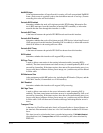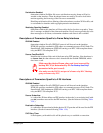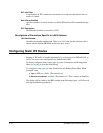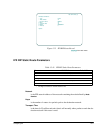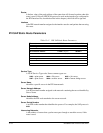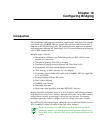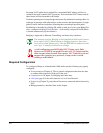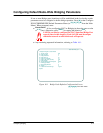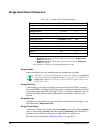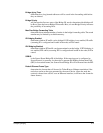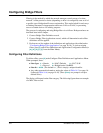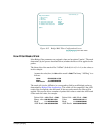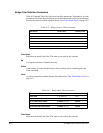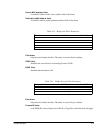
16-2 SmartSwitch 1800 4.0 User Guide, Rev 01
Incoming LLC2 traffic that is destined for a terminated MAC address will be for-
warded to the node's internal LLC2 processes. Non-terminated LLC2 frames and all
other frames will be forwarded to the bridge.
Under the spanning tree concept, bridges automatically maintain forwarding tables via
exchange of messages with other bridges on the network, and determination of single
paths for traffic between endpoints (assuming there are multiple possible paths).
Each Bridge is identified by a Bridge ID, which is made up of a two-octet Bridge Pri-
ority—configured in Bridge Node Defaults —followed by a unique 48-bit ID (which
is created automatically by the software).
Bridging is supported on Ethernet, Token Ring, and frame relay interfaces.
The interfaces used for Bridging in the SmartSwitch 1800 are the same as
those used for LLC2. When referring to Bridging, however, these inter-
faces will be called "Bridge ports," since the IEEE 802.1d standard uses the
term "port" to identify a connection to a bridge.
Avoid configuring parallel Bridge/LLC2 frame relay links
between two FRMs if one path is in native LLC2 format and the
other in some other format. Since native LLC2 interfaces do not
support the spanning tree protocol, a loop can be created,
causing a node failure.
Required Configuration
To configure a Bridge in a SmartSwitch 1800, make sure the following are properly
configured:
●
Node parameters (Chapter 4). This is general configuration that must be done
no matter which protocols will be run in the node.
●
Loaded protocols (Chapter 5): Bridging and frame relay.
●
LAN port (page 6-5) that will connect to a Local Area Network.
●
Frame relay (Chapter 7) port(s) that will connect to a network and/or frame relay
PVC.
●
Bridge parameters, described later in this chapter.



